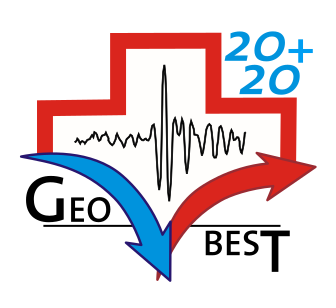GEOBEST2020+

|
Geothermal energy promises to be a local, versatile, clean, and renewable resource that will help achieve Switzerland’s energy and climate goals. Worldwide, numerous geothermal projects have been successfully operating for decades. Unfortunately, some have also been aborted during the reservoir construction or operation phase. Today, adequate risk governance of induced seismicity is perceived as essential for establishing safe and economically viable geothermal projects.
In Switzerland, the subsurface is under the sovereignty of the cantons. Therefore, the cantonal authorities in charge of the permitting, concessioning, and regulatory oversight must have access to independent, state-of-the-art seismological expertise. Furthermore, independent seismic monitoring and competent project oversight are important contributions to risk governance and can build and maintain public acceptance of geothermal projects.
GEOBEST2020+ ensures that the Swiss Seismological Service (SED), the federal agency for earthquakes, can provide seismological expertise and baseline seismic monitoring services to the cantons at no cost and independently of the operators of geothermal projects:
Seismological consultingSED experts can support the cantonal authorities with:
Seismic monitoring and earthquake alarmingSED can provide the baseline seismic monitoring, including:
|
|---|---|
| Project Leader at SED | Dr. Toni Kraft |
| SED Project Members | Dr. Veronica Antunes, Dr. Vanille Ritz, Dr. Philippe Roth, Dr. Tania Toledo, Prof. Dr. Stefan Wiemer |
| Funding Source | |
| Duration | 2020-2027 |
| Keywords | Deep Geothermal Energy, Induced Seismicity, Induced Earthquake Hazard & Risk, Real-time monitoring, Support and consultancy |
| Research Field | Monitoring, Alerting and Analysis; Earthquake Processes |
| Website | /knowledge/geothermal-energy-earthquakes/competent-seismological-consulting/ |